
Activities to do in Italy on Valentine's Day
Discover great activities to do in Italy on Valentine's Day with your loved one, from via ferrata and canyoning to paragliding and hot air ballooning.
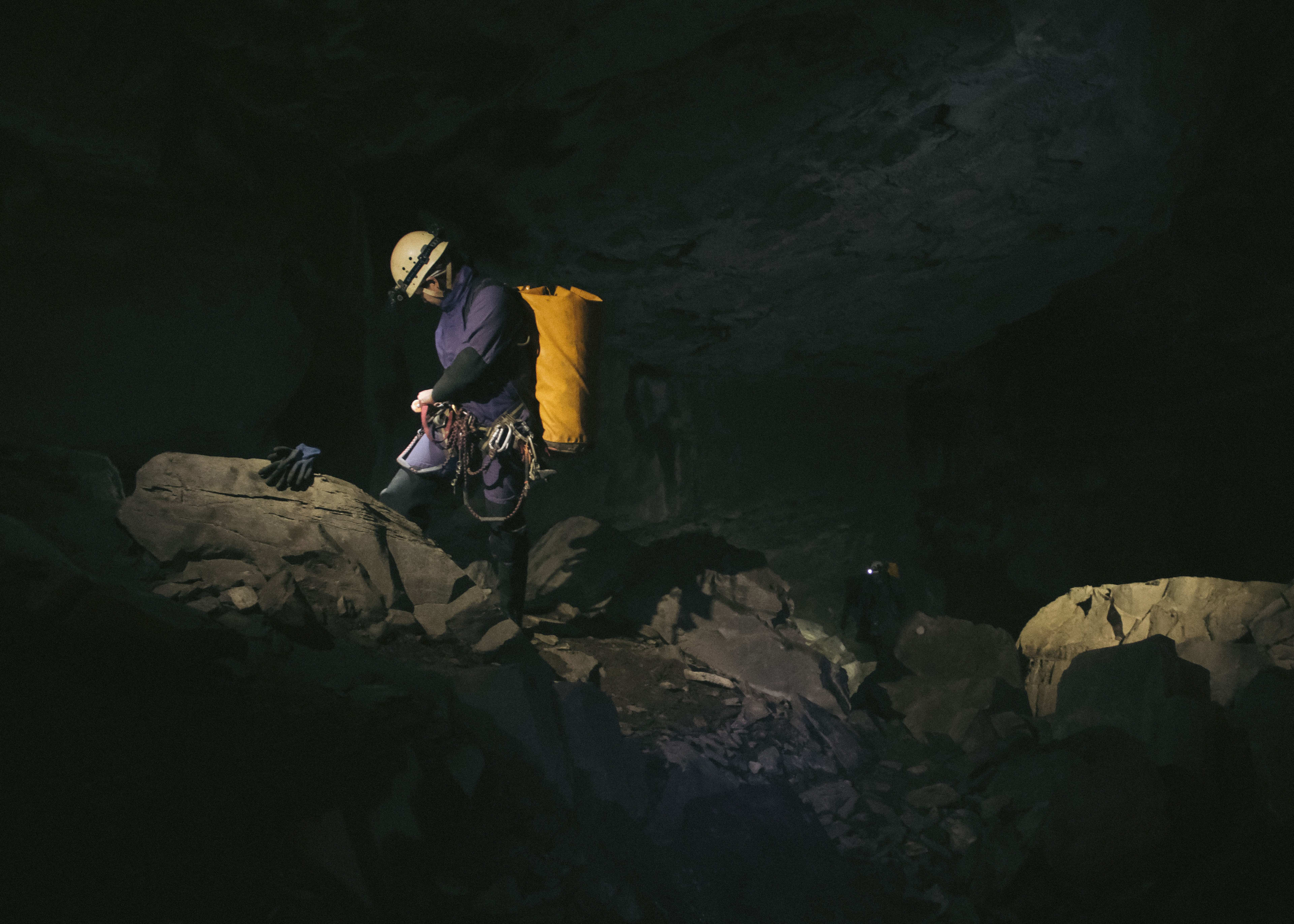
From ancient explorers to modern thrill-seekers, the allure of caving has captivated generations... In this comprehensive caving guide for beginners, delve into the rich history, learn more about practical essentials, and discover the best places in the world to go caving for the first time!
Caving is a very special kind of outdoor activity that immerses you in a geological wonderland. Depending on which part of the world you’re from, you may call it by different names such as spelunking, potholing, or speleology but the term caving paints quite the picture, for most people.
This is not among the most popular sports in the world but it has a peculiar allure and we thought why not spread the word? Everyone should give it a try at least once in their lifetime because it's a fantastic exploratory sport for those looking for a different kind of adventure. Discover this guide for caving beginners to sharpen your theoretical skills!
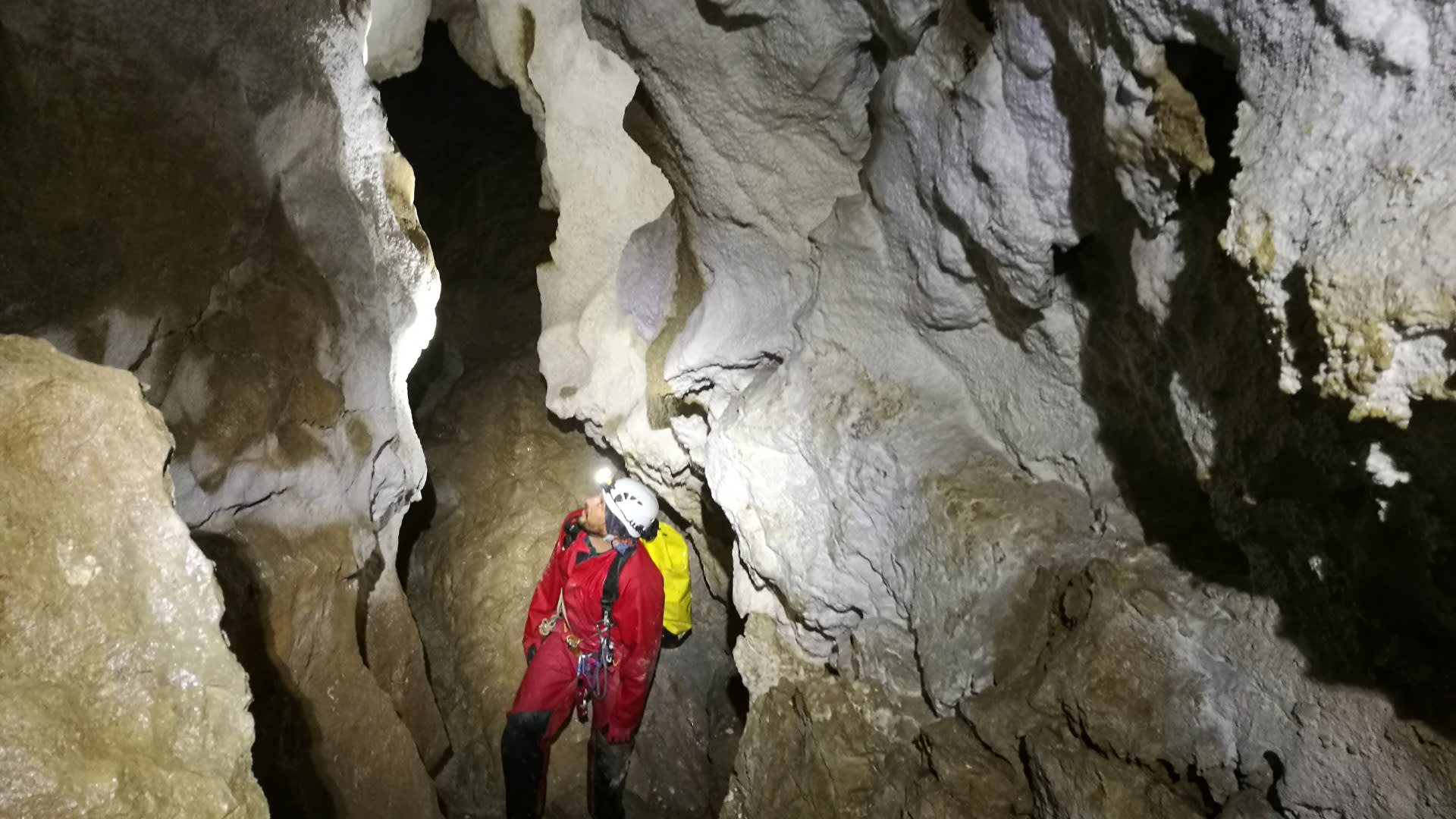
Well if you truly are a beginner when it comes to caving, its history is worth knowing. In the mid-19th century, an Englishman named John Birkbeck, explored the Gaping Gills in 1842, and Alum Pot between 1847 and 1848 both located in North Yorkshire, England. Fellow Englishman, Herbert E. Balch, soon followed the footsteps of Birkbeck and took on the Wookey Hole caves in Somerset, England. 50 years after Birkbeck’s curious mind spearheaded caving, in 1892 the Yorkshire Rambler’s Club was founded.
While the English, in a sense, pioneered the sport, the French took it to the next level. As early as 1889, Édouard-Alfred Martel, the French "father of modern speleology" accomplished the first descent and exploration of the Gouffre de Padirac in the Occitania region. In 1895, he realised the first full descent of a 110-meter wet vertical shaft at Gaping Gill in Lancaster, Great Britain! He is known for having created his own methods using metal ladders and ropes.
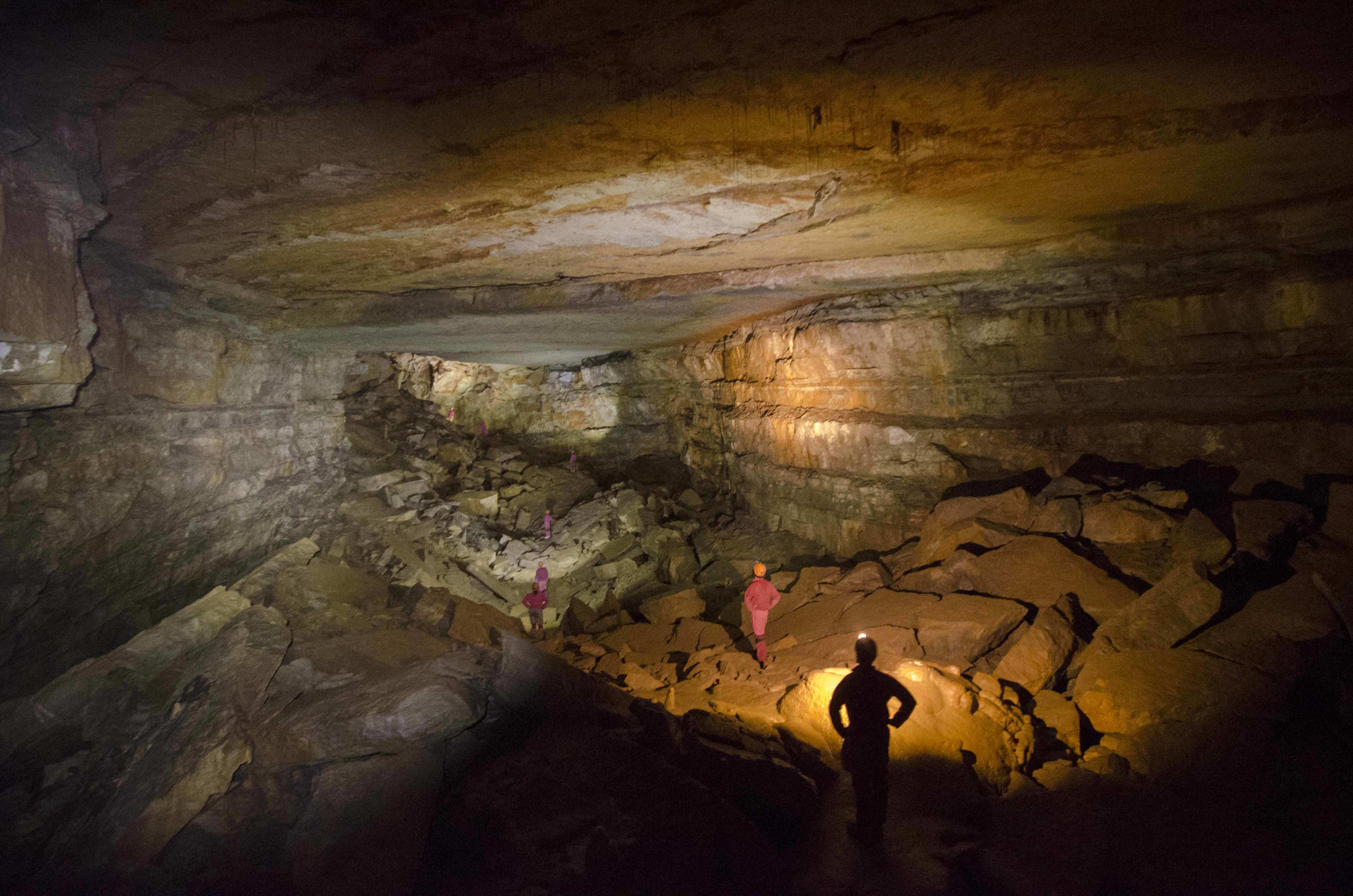
By the 1930s the French had caving fever and produced poster boys of the sport in the form of Robert de Joly, Guy de Lavaur, and Norbert Casteret. The French didn’t stop at creating history, they decided to create records as well. During the Second World War, an alpine team composed of Pierre Chevalier, Fernand Petzl, Charles Petit-Didier, and more, explored the Dent de Crolles – located just outside Grenoble in the French Alps. It was the deepest explored cave system in the world at 658 m, at the time, and took the team 11 years to explore! It is important to mention that the team also helped innovate the scaling pole, nylon ropes, and the use of explosives in caves!
During the mid-20th century, two Swiss alpinists – Juesi and Marti, created the rope ascender a.k.a. the Jumar, a device (usually mechanical) used for directly ascending a rope. It allowed one to climb up, and therefore it renders carrying and using heavy ladders, allowing for much cheaper, faster, and easier cave exploitation. The Jumar today is synonymous with all rope ascending gear – including the scroll. Fernand Petzl created a caving equipment manufacturing company in 1970 called Petzl, it is nowadays the number 1 climbing/rope manufacturing company in the world!
Fast forward 50 years and today we can not only explore complex cave ecosystems, but with the right training and equipment, we can also go cave diving.
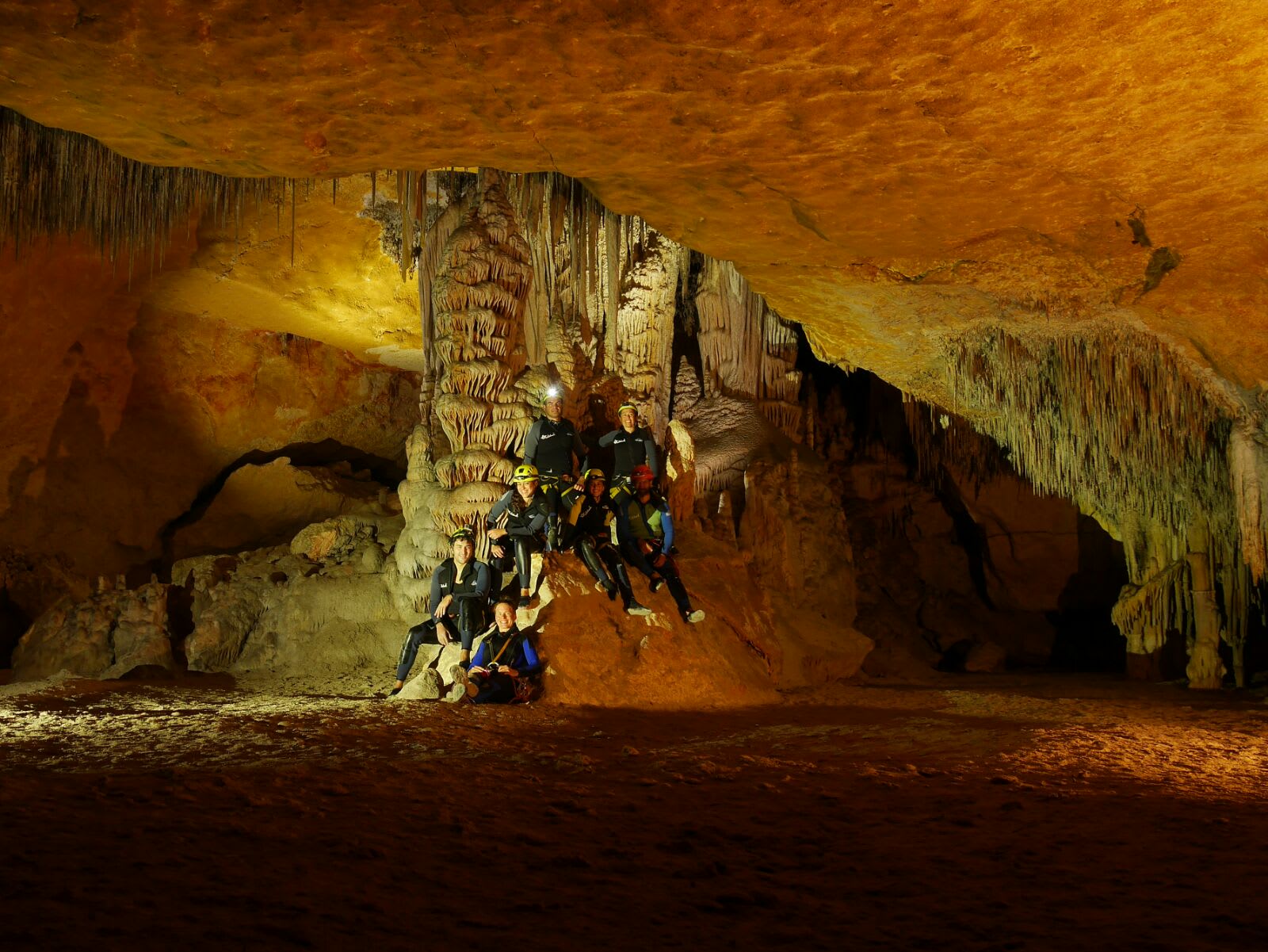
Caving for beginners can be intimidating but it is the perfect activity to pacify that curious inner child we all forgot about. It is essentially a way for you to dive into the unknown and explore a new ecosystem – full of surprises! It allows connecting with nature in a truly immersive way, as well as learning about geological processes and the history of our planet! Caves can be viewed as time capsules – as it is easy to lose track of time, especially in the absence of daylight. From narrow passages to bottomless pits – caves are anything but consistent in terms of their landscape, which means they will constantly test the limits of your body.
Crawling through muddy surfaces or squeezing through narrow passages will give you a taste of nature. Whether seeking excitement, tranquility or a deeper understanding of the Earth's mysteries, caving is a deceptively demanding and extremely technical sport and can be compared to mountaineering or diving.
So it all comes down to this. What can you expect when you go caving? Well, at the end of the day, doing is better than reading but it certainly helps to know certain techniques you’ll practice, under the supervision of an instructor, of course. Essentially, there are two types of caving:
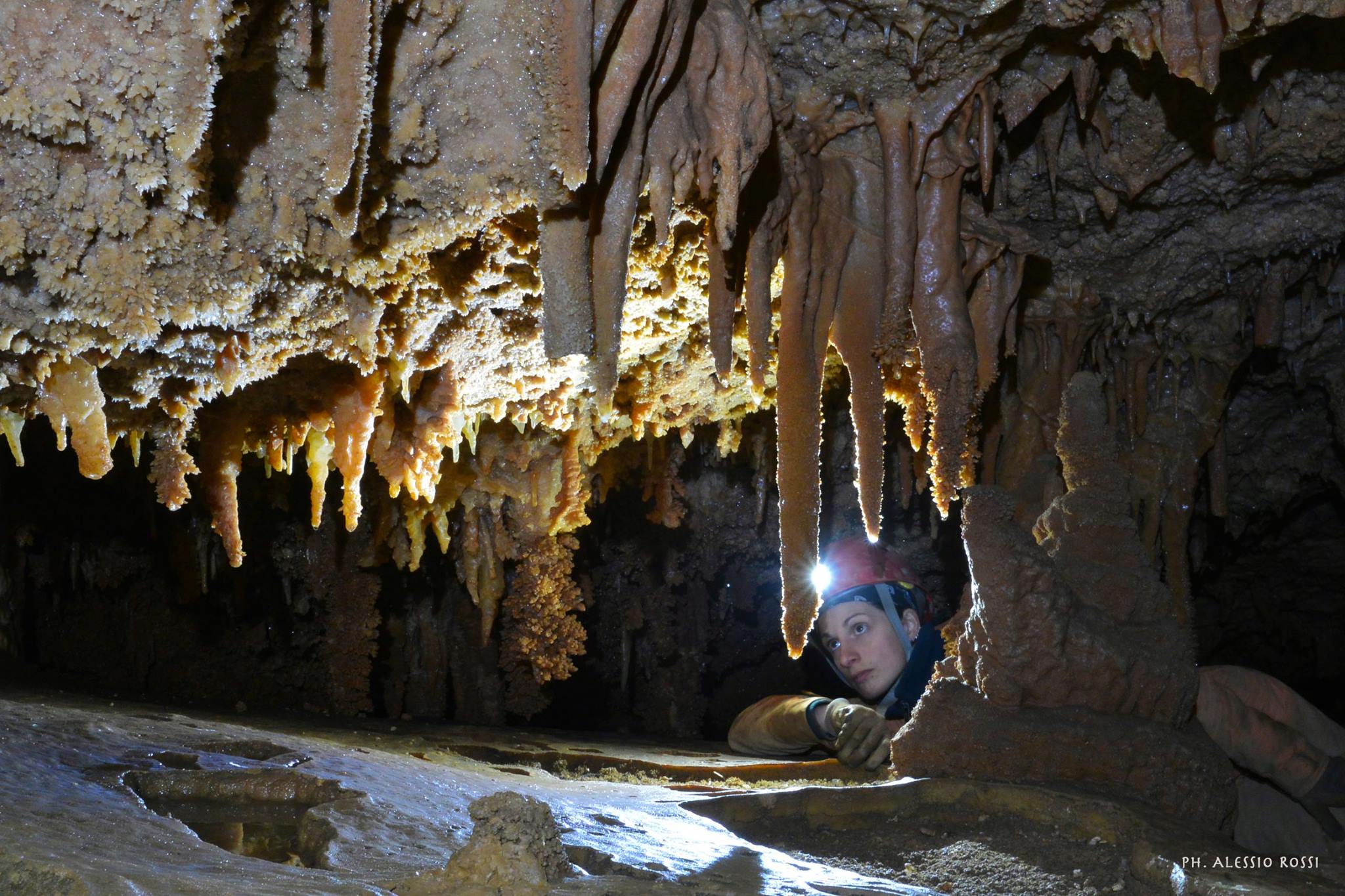
Contrary to what you’re thinking, horizontal caving doesn’t necessarily mean that the passage in the cave is horizontal. It is the most elementary form of caving perfect for beginners.
Some helpful techniques, while you’re squeezing your way through a tight spot, could be scrambling, chimneying traversing, hand line, belaying, body belaying, or self-belaying. Horizontal caving techniques like the ones mentioned above may seem difficult to grasp but can be put into practice, easily.

Vertical caving, on the other hand, is exactly what it sounds like. It involves one climbing or descending vertical passages in the cave and demands a much higher degree of know-how. We can’t cover everything but here are some of the basics:
Fun fact: Did you know that Sótano de Las Golondrinas in San Luis Potosi, Mexico has the deepest freefall drop of approximately 1,100 feet?
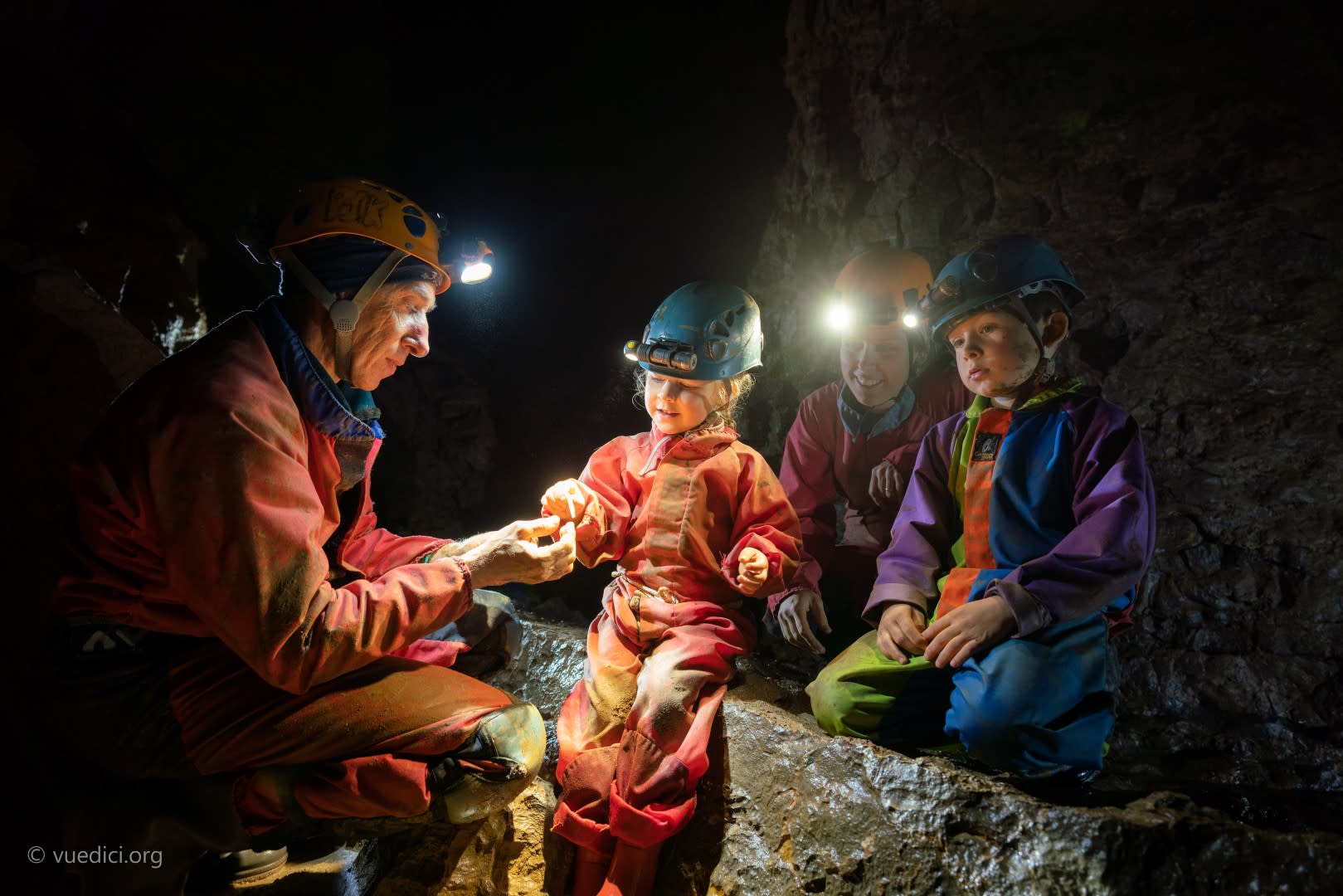
Depending on the cave, children from the age of 6 can go caving too! Well in a nutshell that is the answer to the question above but at the same time, everybody must take necessary precautions when they go caving. Caving poses different challenges for different people and that’s where the rules change for everyone and people must adapt.
Caving is certainly not for severely claustrophobic people. Narrow, tight passages can be psychologically draining and shouldn’t be taken lightly at all. Children below the age of 17 must be assisted by an adult while caving. People who suffer from a fear of heights, have a weak heart condition, are over 3 months pregnant, have severe back problems, or fear of the dark must consult a doctor before they take on the cave.
Unless you’re taking on an advanced level of caving, vertical caving, or cave-diving (which is a different sport) for instance, you do not require a license or training but we strongly recommend your first time to be with an experienced group.
If you’re going caving in France, make sure you go through the medical checklist first, according to the French Federation of Speleology. Even people with disabilities can enjoy the fruits of caving. In fact, wheelchair-accessible caves are nature’s way of saying: where there’s a will, there’s a way.
Caving is a very low-maintenance sport and doesn’t require a huge investment unless you’re attempting vertical caving. Since this is a beginner's guide, we will stick to the basics. Your caving essentials must include:
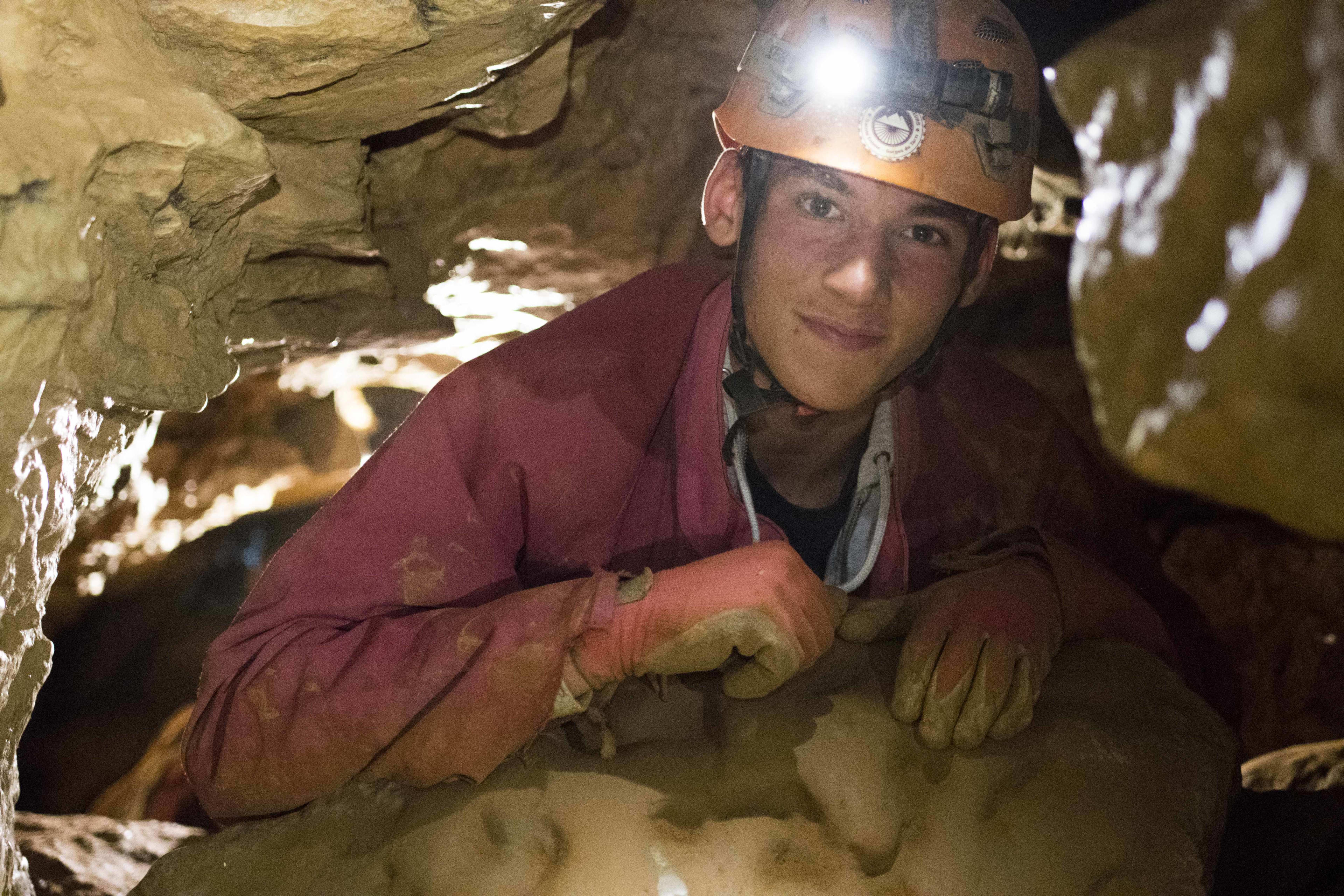
If you go caving with an instructor or guide, they usually take care of the caving equipment such as the overall, headlamp helmet, knee pads and elbow pads, gloves, boots, and climbing equipment.
The main danger while caving is the risk of flooding, which means you could be stuck in the cave for days. To be prepared for this danger, we advise you to carry food & water supplies and enter the cave with a guide. Other rare but realistic risks involve falling and injuring yourself, getting lost, suffering from hypothermia, and physical exhaustion.
However, it’s not all doom and gloom! Just like any other sport – realizing your limits is important. With good research, the right company, and awareness, you can dodge these potentially deadly bullets without breaking a sweat.
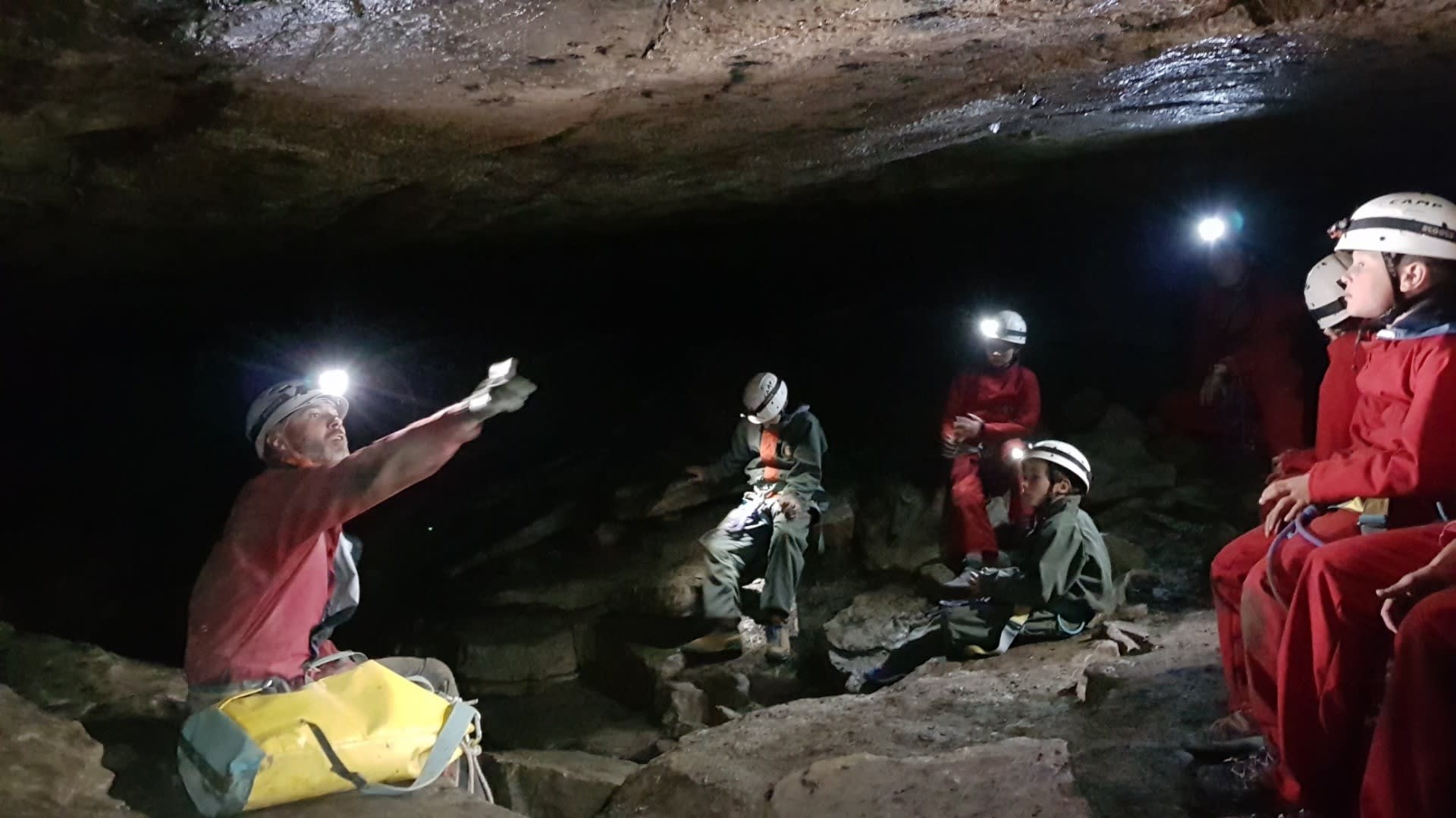
There are various caving courses for beginners, but the best way to know whether you're about to find a new passion is to go caving with a guided tour. After that, courses of different levels help you progress in the sport and becoming more autonomous:
Well, now that you’re overwhelmed with knowledge on the subject of caving, we’re hoping that this guide on caving for beginners has convinced you to give the sport a shot. Here are some of the best beginner's caves in the world:
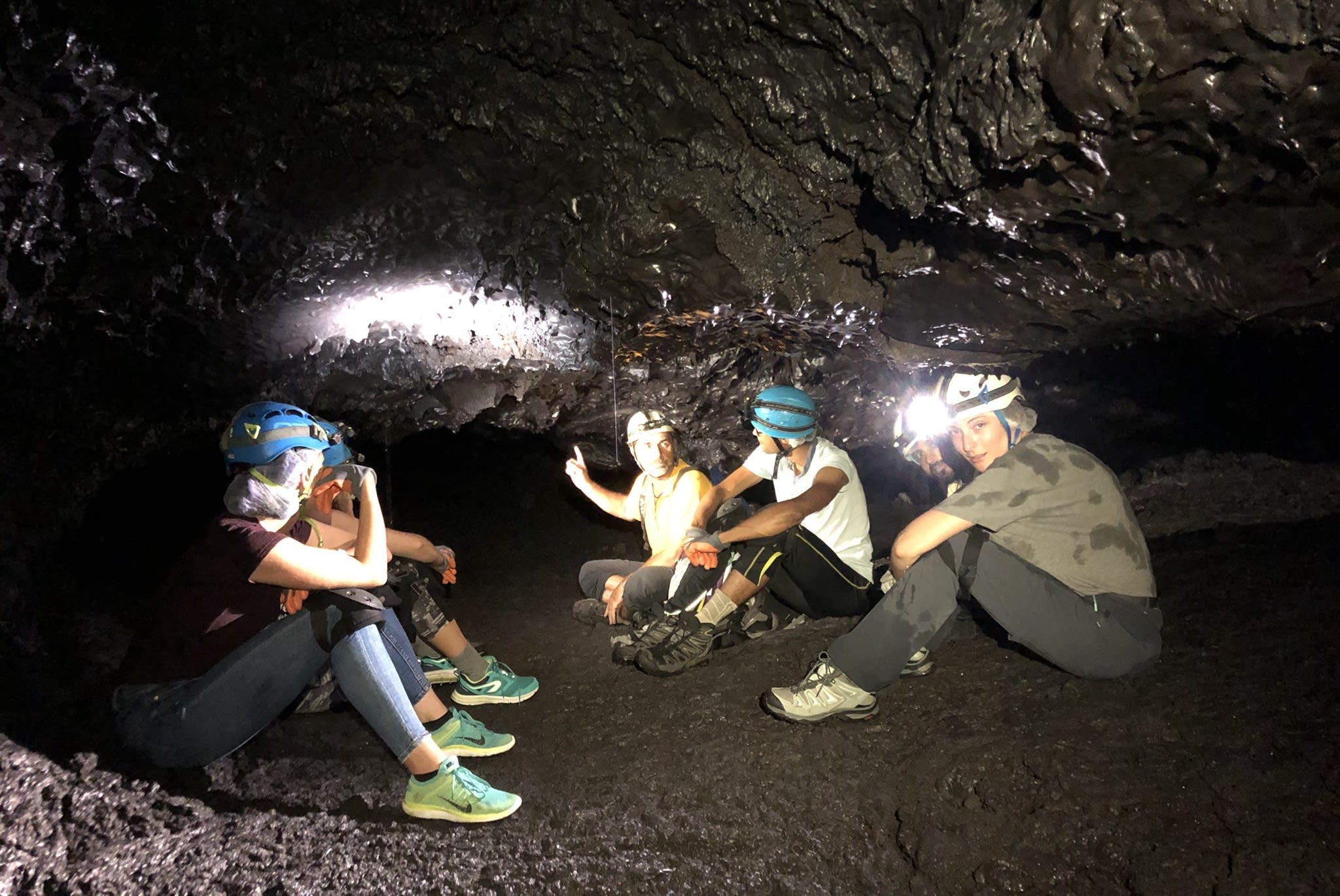
Formed by the lava flow of 2004, caving on Piton de la Fournaise is a unique activity. For around 3 hours, you will observe several remarkable geological formations such as lava stalactites, lava benches, stalagmites, vitrified walls, and skylights...
You will go caving in the lava tunnels in a small group with a professional guide. During this exploration of the underground environment, you'll have the chance to face 100 meters of positive and negative vertical drop, culminating at 400 meters. Fascinating, isn't it?

If you want to try out an unusual activity, we have something for you! Caving on the Falljökull glacier is accessible to everyone, so beginners can try out the sport in a completely magical setting!
Situated at the foot of Hvannadalshnjúkur, Iceland's highest peak, the Falljökull glacier, at the foot of Vatnajökull, offers the perfect terrain for exploring ice hiking and caving-in ice caves from Skaftafell. You will be guided by a professional who will tell you all about the history of the formation of this glacier and its evolution towards the ocean. You will spend between 1h30 and 2 hours exploring the ice, surrounded by extraordinary scenery.
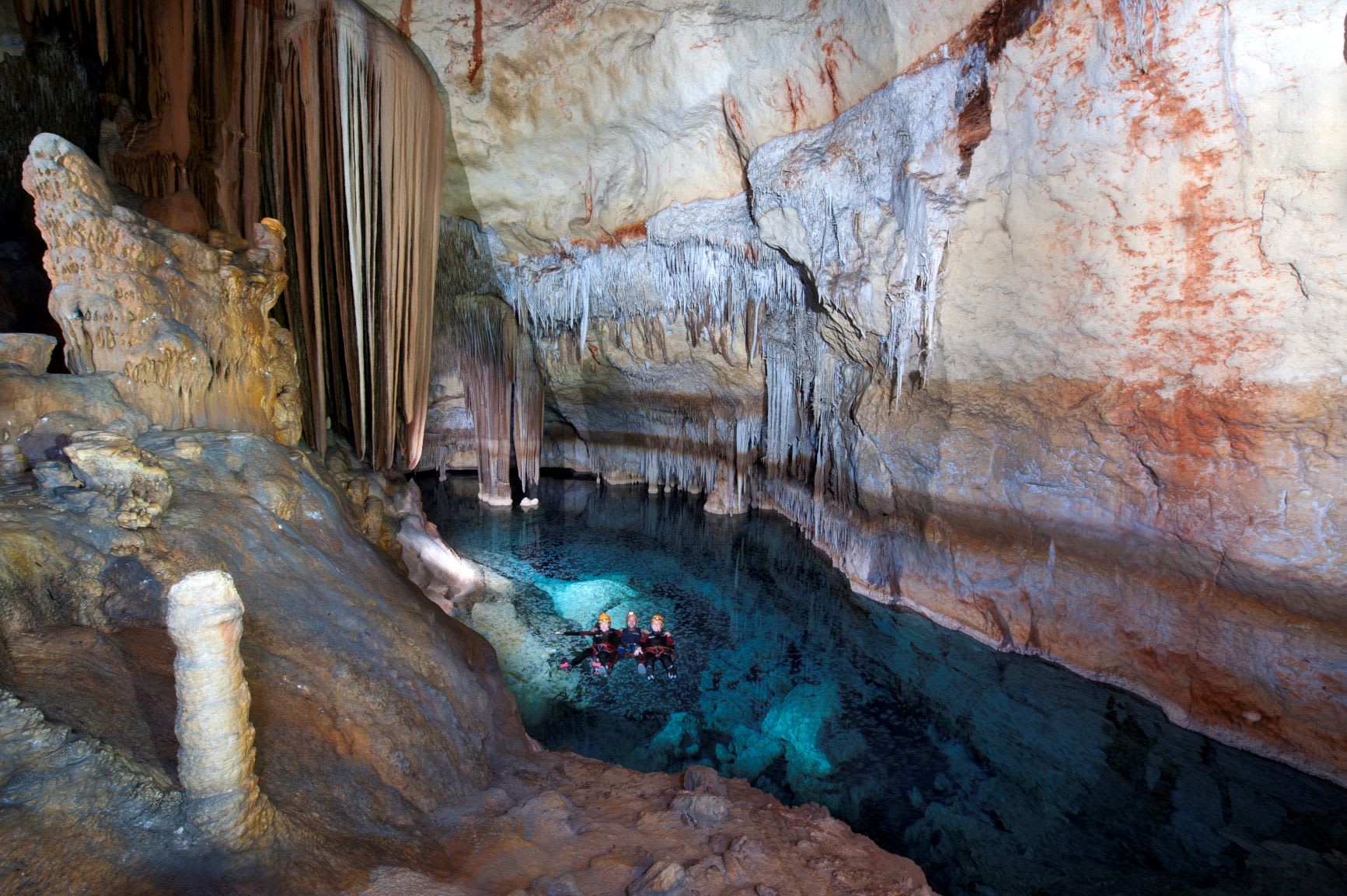
Located in Cala Romanica, near Manacor, the Cova des Coloms is one of our favorite spots when it comes to exploration! Caving in Cova des Coloms is an ideal excursion for anyone caving for the first time and who wants combine caving with the sea! To access this enchanted cave, you must swim 300 meters along the coast! But don't worry, an experienced guide will lead you through it.
The day begins with a 30-minute walk along the coast, culminating in an impressive 20-metre abseil into underground lakes to the heart of the cave with its turquoise waters...
From lava tunnels on Reunion Island, sea caves in Mallorca and ice caves in Iceland, caving is a unique way to discover extraordinary landscapes and their history. And the fact that you go with an experienced guide makes the activity accessible to almost everyone.
If you enjoyed this caving guide for beginners, it's because this sport really appeals to you and you just needed a little more information before booking one of our caving activities!
After your spelunking experience you'll surely be ready to do abseiling, and squeeze through narrow passages! Maybe you would like to try rock climbing since both activities involve scrambing and climbing...